- Society of Indian Automobile Manufacturers
- SIAM
- Rajesh Menon
- Shailesh Chandra
- auto sales
- car sales
- two-wheelers
- three-wheelers
- commercial vehicles
India Auto Wholesales Attain New Highs In FY2025
- By Nilesh Wadhwa
- April 15, 2025

The latest data released by the Society of Indian Automobile Manufacturers (SIAM) show that the Indian automotive industry wrapped up FY 2024-25 with a solid performance, driven by resilient domestic demand, an uptick in exports, and a renewed push toward green mobility.
While the pace of growth varied across segments, the industry overall clocked a healthy 7.3 percent increase in domestic sales, reinforcing its steady recovery trajectory in a post-pandemic economy.
The passenger vehicles segment posted its highest-ever annual sales, breaching the 4.3 million mark – a 2 percent rise over the previous year. Although the high base of FY 2023–24 tempered the growth rate, the segment continued to impress with its scale.
SUVs emerged as the dominant sub-segment, accounting for 65 percent of total PV sales, up from 60 percent last year.
The market responded enthusiastically to new launches and customer demand towards higher ground clearance models. It is also important to note that discounts and promotions kept demand buoyant.
On the exports front, a record 770,000 units were shipped, up 14.6 percent, fuelled by demand from Latin America, Africa and emerging interest from developed markets.
India’s ubiquitous two-wheelers rebounded strongly with 19.6 million units sold, marking a 9.1 percent growth over the previous year. The scooter category led the charge, boosted by improved rural and semi-urban road connectivity.
EV penetration crossed 6 percent, reflecting a growing preference for sustainable options.
Two-wheeler exports rose by 21.4 percent, supported by macroeconomic stability in Africa and expansion into Latin American markets.
The three-wheeler segment on the other hand scaled new highs with 741,420 units sold, a 6.7 percent growth over FY 2023–24. Urban and semi-urban demand for last-mile transport, especially electric models seem to have played a key role.
The commercial vehicles segment posted a slight 1.2 percent decline in annual sales, though Q4 offered a glimmer of hope with a 1.5 percent uptick. Light CVs struggled, while Medium & Heavy CVs (M&HCVs) remained steady. Infrastructure development spurred demand for buses and higher-GVW trucks.
CV exports jumped by 23 percent, indicating global recovery in freight mobility.
In terms of EV sales, the country saw 1.97 million green vehicles sold, up 16.9 percent, with electric two-wheelers seeing a 21.2 percent rise in registrations.
Looking Ahead: Optimism with Caution
The industry body stated that going forward leaders are cautiously optimistic about FY 2025–26. Normal monsoon forecasts are expected to aid rural demand. Recent personal income tax reforms and RBI rate cuts could boost vehicle financing and overall consumer sentiment. Continued export momentum, especially in Africa and neighbouring regions, will offer strategic resilience.
But on the other hand, challenges loom in the form of global geopolitical tensions and evolving supply chain dynamics.
Shailesh Chandra, President, SIAM, said, “The Indian automobile industry continued its steady performance in FY2024–25, driven by healthy demand, infrastructure investments, supportive government policies and continued emphasis on sustainable mobility. Passenger vehicles, two-wheelers and three-wheelers grew in FY2024-25 compared to FY2023-24, but growth rates have been varied across segments. Passenger vehicles and three-wheelers witnessed a moderate growth on account of the high base effect but saw the highest-ever sales in these categories, while the two-wheeler segment registered strong growth in FY2024-25. However, commercial vehicles witnessed a slight degrowth in the FY2024-25, though performance in recent months has been comparatively better. On the exports front, good recovery is seen across all segments, particularly passenger vehicles and two-wheelers reflecting improved global demand and India's growing competitiveness. In FY2024-25, the government of India introduced the PM E DRIVE scheme and PM e-Sewa schemes which underscores the firm commitment of the Government towards promoting sustainable mobility. Looking ahead, the backdrop of stable policy environment, along with recent measures such as reforms in personal income tax and RBI’s rate cuts, will help in supporting consumer confidence and demand across segments.
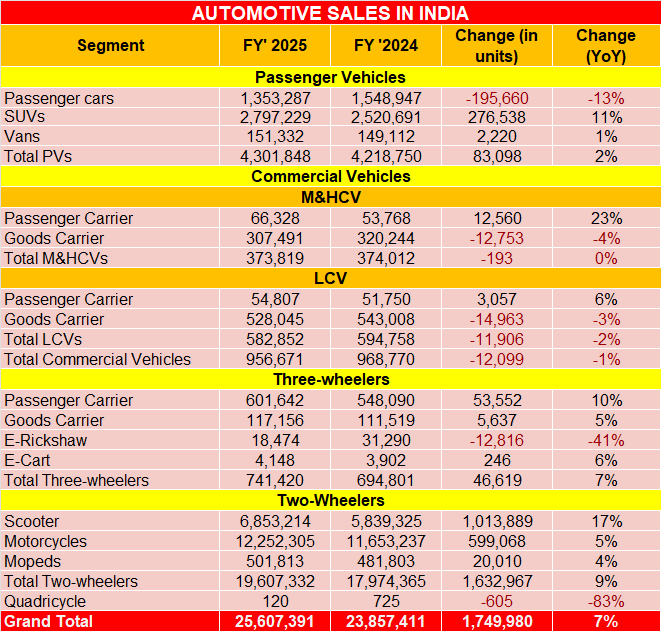
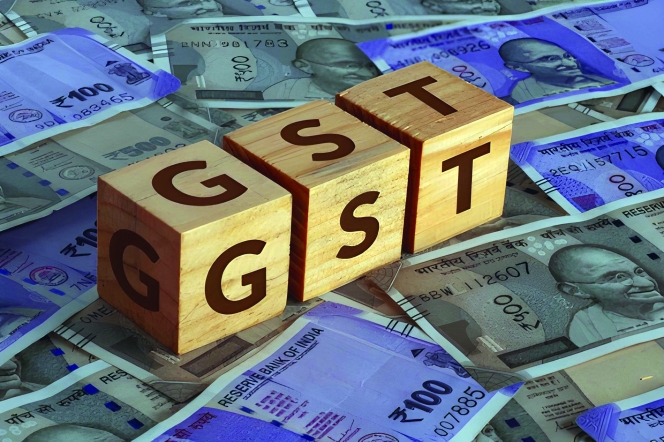
The rollout of GST 2.0 marks a defining moment in India’s economic journey – a reform that may well prove even more consequential than the original introduction of the Goods and Services Tax. Especially for a sector like tyres, the recent reduction in (GST) on tyres is far more than just a change in numbers. It is a transformative step that touches every wheel turning on India’s roads – from a farmer’s tractor to a trucker’s long-haul trailer and from a commuter’s scooter to a construction vehicle powering the nation’s infrastructure.
For years, tyres were taxed at 28 percent – the highest GST slab, clubbed with luxury and demerit goods. This categorisation never truly reflected the essential role tyres play in our everyday lives. Tyres are not a luxury. They are a fundamental enabler of mobility, supporting the movement of people and goods across cities, towns and villages. By bringing GST rates on tyres down to a more rational level, the government has addressed a long-standing anomaly and set the stage for widespread benefits across the economy.
The most visible impact of this move will be felt on the ground – literally. Lower GST means more affordable tyres for all users. Especially for transporters and fleet operators, tyres account for a significant chunk of vehicle running costs. A reduction in tax translates into lower replacement costs, freeing up working capital and improving operational margins. Farmers, small traders, delivery personnel, service providers, transporters – every segment that relies on mobility will feel this relief.
India has been working hard to bring down logistics costs, which are believed to be about 13–14 percent of GDP – much higher than global benchmarks. Tyres have a direct bearing on vehicle operating efficiency, fuel consumption and maintenance schedules. When tyres become more affordable, operators can replace tyres on time, and run vehicles more efficiently.
This naturally leads to lower logistics costs. Reduced logistics costs ripple across the value chain, helping industries move goods faster and at lower cost. This aligns perfectly with India’s ambition to become a more globally competitive manufacturing and trading hub.
Tyre industry’s story is not just urban – it’s deeply rural as well. Tractor tyres, power tiller tyres and tyres for animal-drawn vehicles are integral to the agricultural economy. A reduction in GST brings meaningful relief to farmers and small cultivators who rely on these tyres for their daily operations. By easing this cost, the government has extended direct support to rural mobility and agricultural productivity – an often underappreciated but critical outcome of this reform.
One of the most powerful yet often overlooked impacts of this decision lies in road safety. Worn-out tyres are a major cause of road accidents, particularly on highways. High replacement costs often lead to tyres being used well past their safe life.
With lower GST making new tyres more accessible, both individual motorists and commercial fleet owners are more likely to replace tyres on time, keeping vehicles safer and reducing accident risks. This complements the government’s broader road safety agenda, making highways not just faster but safer for everyone.
For the Indian tyre industry, which is one of the largest in the world, this reform is a game changer. It creates a more balanced tax structure, supports better cash flow, improves compliance and strengthens the competitiveness of domestic manufacturers. It will also encourage investment and capacity expansion, enabling the industry to serve growing domestic demand and tap export opportunities more effectively.
The GST reduction on tyres is a strategic, forward-looking policy decision that will benefit the entire mobility ecosystem. It acknowledges the essential role tyres play – not just as a product, but as a critical enabler of transportation, logistics, rural livelihoods and road safety.
As this reform takes root, its positive impact will be felt by consumers, businesses, farmers and industries alike. The tyre industry, represented by ATMA, welcomes this move wholeheartedly and remains committed to working alongside the government to strengthen India’s journey towards affordable, efficient and safe mobility for all.
The author is Director General of the New Delhi-based tyre industry association, Automotive Tyre Manufacturers’ Association (ATMA).The views expressed here are personal.
WACKER Secures Gold Medal In EcoVadis Sustainability Rating
- By TT News
- December 18, 2025
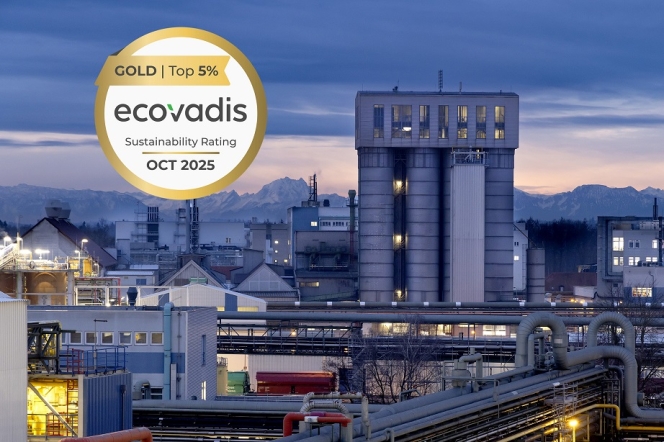
WACKER has earned the 2025 Gold Medal from the independent rating agency EcoVadis, marking its continued recognition for sustainable practices and responsible corporate governance. This distinction places the company within the top five percent of all businesses assessed by EcoVadis (over 1,000 companies globally). WACKER's overall score improved from 77 points (in 2024) to 79 points, driven largely by enhanced reporting and concrete actions focused on Scope 3 emissions and ethical standards.
The EcoVadis assessment measures the quality of a company’s sustainability management through a methodology grounded in international frameworks like the Global Reporting Initiative, the UN Global Compact and ISO 26000. Performance is scored from 0 to 100 across four core areas: environment, labour and human rights, ethics and sustainable procurement, using 21 specific indicators.
In line with its commitment, WACKER provides its EcoVadis evaluation to customers as a standardised and credible validation of its sustainability efforts. The company has also defined ambitious climate targets, aiming to halve its absolute greenhouse gas emissions by 2030 relative to 2020 levels. Progress is already evident, with a 30 percent reduction achieved as of 2024. Looking further ahead, WACKER strives to reach net-zero emissions across its operations by the year 2045.
Peter Gigler, Head of Corporate ESG, WACKER, said, “The result confirms our initiatives in many key areas. It provides our customers with invaluable proof.”
Craig Borman Appointed As Head Of OTR At BKT USA
- By TT News
- December 18, 2025
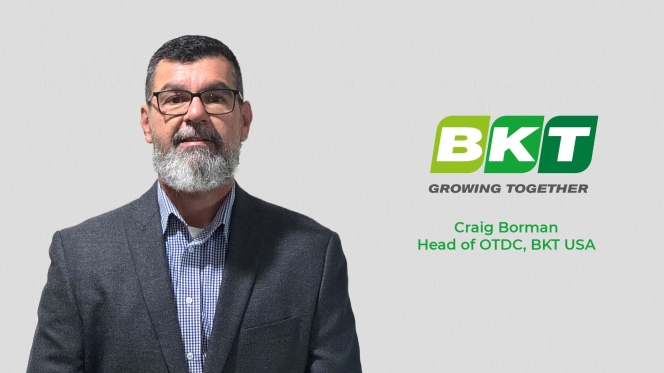
Balkrishna Industries Ltd (BKT Tires), a global leader in off-highway tyre manufacturing, has appointed Craig Borman as Head of OTR at BKT USA. The appointment is in line with BKT’s long-term strategy through 2030.
Borman brings with him 20 years of experience across off-road equipment, tyres and rubber tracks. He will play a key role in leading BKT USA's OTR team and expanding the company's presence in this market while increasing awareness of the value and dependability of BKT's range of products.
Borman said, “I’m extremely excited to join the BKT family and to build off the successes that this team has already achieved. I look forward to engaging with our partners, determining how we can accelerate our mutual growth and working towards achieving BKT’s vision of being a recognised leader in the OTR segment.”
Christian Kötz To Succeed Nikolai Setzer As Continental CEO In Planned Handover
- By TT News
- December 18, 2025
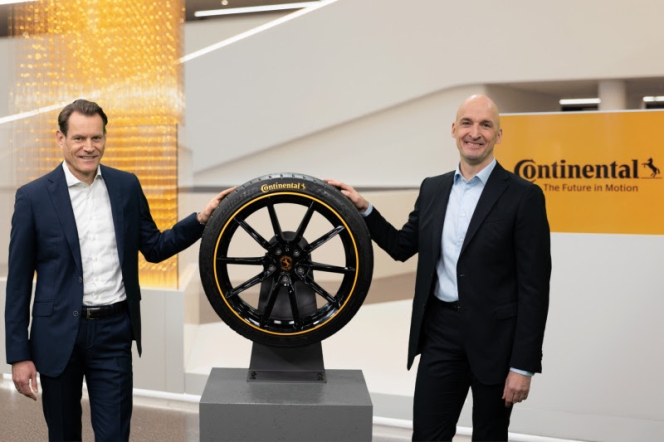
The Supervisory Board of Continental AG confirmed a significant leadership transition during its meeting on 17 December 2025. Christian Kötz will be appointed as the new Chairman of the Executive Board and Chief Executive Officer, effective 1 January 2026. He succeeds Nikolai Setzer, who will step down from the Executive Board on 31 December 2025. Setzer's departure follows more than 16 years as a board member, including the last five years in the CEO role, and occurs by mutual agreement as the company reaches a pivotal point in its strategic evolution.
This planned change in leadership aligns with the substantial progress Continental has made in its transformation into a pure-play tyre company. Major structural milestones have been achieved, including the spin-off of Aumovio and the signing of an agreement to sell the Original Equipment Solutions (OESL) business area. Regarding the planned 2026 sale of ContiTech, internal preparations are largely complete. The market outreach phase has concluded, and a structured sales process is scheduled to begin in January 2026, setting the stage for the final step in the corporate realignment.
Kötz’s extensive background within the tyre business, dating back to 1996, positions him to lead this final phase. A member of the Executive Board since 2019, his previous leadership roles within the Tires group sector included responsibility for the passenger car tyre replacement business in the EMEA region, the original equipment and commercial vehicle tyre business units and global research and development for passenger car tyres. His many years of trusted collaboration with Nikolai Setzer are expected to ensure continuity during the transition.
Kötz will lead an Executive Board comprising several key figures. Alongside him and Philip Nelles, who has headed the ContiTech group sector since 2021, are Roland Welzbacher and Ulrike Hintze. Welzbacher joined the board in August 2025 and assumed the role of Chief Financial Officer on 1 October 2025. Hintze was appointed to the board on 1 July 2025, serving as Chief Human Resources Officer and Director of Labour Relations. This board will be responsible for driving the tyre business forward, completing the corporate realignment and, following the sale of ContiTech, integrating the remaining group functions into the tyre organisation.
Wolfgang Reitzle, Chairman of Continental’s Supervisory Board, said, “Nikolai Setzer has been instrumental in shaping Continental, realigning the organisation and paving the way for three strong, independent companies. For this, he has the thanks of the entire Supervisory Board as well as my personal gratitude. With this handover, we are consolidating responsibility for the tyre business, the realignment and the remaining tasks of the group functions in one role. Christian Kötz is one of the most distinguished managers in the global tyre industry. With his extensive experience and passion for Continental, we firmly believe he is the right choice to lead the company successfully into the future.”
Setzer said, “In recent years, we have succeeded in transforming a diverse portfolio of businesses into three strong, independent champions. After 28 years at Continental, now is the right time for me to hand over responsibility to Christian Kötz. I’m extremely grateful for the journey we’ve all shared and proud of what we’ve all achieved together. I firmly believe that the tyre business, ContiTech, Aumovio and OESL have a promising future ahead.”
Kötz said, “I would like to thank the Supervisory Board for its trust and am excited about this new responsibility. Continental has been my professional home for three decades. Together with the Executive Board team and all colleagues throughout the company, we will complete the realignment and continue the success story of our tyre business.”







Comments (0)
ADD COMMENT